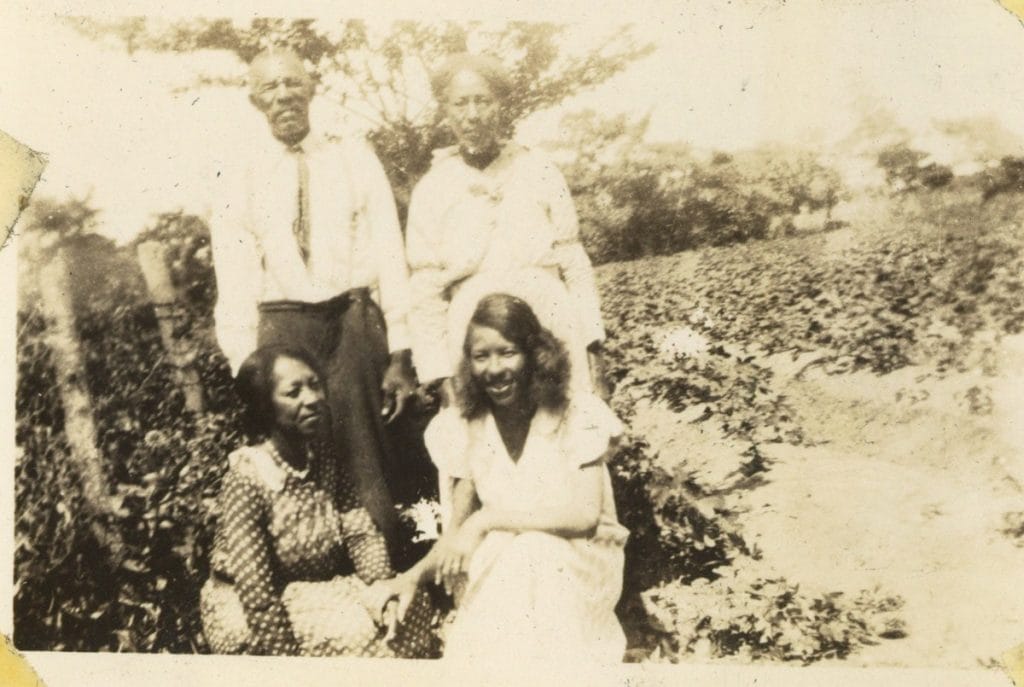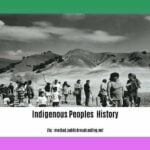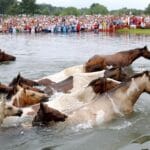Edisto Island, South Carolina, beckons with a history as captivating as its coastal vistas. Perched on the edge of the Atlantic, the island has witnessed the ebb and flow of time, from its days as a Native American settlement to its era as a hub of plantation culture. Join us as we uncover the captivating layers of history that make Edisto Island the fascinating destination it is today.
History of Edisto Island, SC
Edisto Island’s past is as rich and deep as the pluff mud that graces its shores. Named for the indigenous Edisto people, the island whispers tales of Native American life, European arrival, and the enduring strength of African Americans.
Long before European ships dotted the horizon, the Edisto tribe thrived on the island’s bounty, their lives likely intertwined with the tides. One can imagine their days spent fishing in the creeks and cultivating the fertile land. This harmonious existence shifted in 1666 with the arrival of English explorer Robert Sandford, forever altering the island’s course. By 1677, control shifted to the Lords Proprietors, English aristocrats seeking land and wealth.
The arrival of the English ushered in an era of change and, unfortunately, conflict. A stark reminder of the global power struggles of the time, the island faced a Spanish raid in 1686. Yet, Edisto Island endured. Anglo settlers established a foothold, and enslaved Africans were brought to work the land, their forced labor fueling the island’s burgeoning economy.
Over the years, Edisto Island transformed into an agricultural powerhouse. Rice and indigo, crops well-suited to the coastal climate, became economic mainstays, only to be surpassed later by “King Cotton.” Plantations, those poignant symbols of wealth and inequality, emerged across the landscape, their stories forever interwoven with the struggles of enslaved people.
The eruption of the Civil War brought Edisto Island to a crossroads. It became a beacon of hope for many enslaved individuals who bravely sought refuge, their dreams of freedom echoing across the marshes. Though the exact number remains a mystery, oral accounts suggest that hundreds, perhaps thousands, escaped to the island in search of liberation.
Following the war, Edisto Island embarked on a new chapter. Freed from the shackles of slavery, many former slaves made a momentous decision – they returned to the island, not as forced laborers but as landowners. They established cooperatives, pooled their resources, and worked tirelessly to purchase the very land on which they were once enslaved.
Today, the legacy of those resilient souls is woven into the fabric of Edisto Island. The island whispers with stories of the past, carried on the salt-tinged breeze. The Edisto Island Historic District stands as a testament to bygone eras, with preserved buildings offering glimpses into a time capsule of history. The Edisto Island Museum further unveils the island’s captivating past, showcasing artifacts and narratives that bring history to life.
The true storytellers of Edisto Island, however, are its people. Through generations, they have kept the island’s history alive, passing down oral histories, traditional crafts, and a deep connection to the land. These stories, often absent from history books, offer a unique and invaluable perspective on the island’s past – a perspective shaped by resilience, community, and the enduring spirit of hope.
Exploring the history of Edisto Island is not merely a journey through time but an exploration of human experiences. It’s a chance to grapple with the realities of slavery and exploitation while celebrating the triumphs of resilience and the human spirit. The island stands as a reminder that history is not static but a living entity, constantly being reshaped and reinterpreted through ongoing research, new discoveries, and the invaluable perspectives of those who carry its legacy.
What Happened to the People of Edisto Island?
The earliest inhabitants of Edisto Island were the Edistow people, a Native American tribe who gave the island its name. They thrived for centuries before the arrival of European settlers in the 1500s, an event that would irrevocably alter the island’s trajectory. The influx of English settlers led to the establishment of plantations, a system heavily reliant on the labor of enslaved Africans. Sadly, this period witnessed the forced displacement of the Edistow people and the tragic growth of slavery.
During the tumultuous years of the Civil War, Edisto Island became a place of both turmoil and hope. As the war raged, many enslaved Africans saw a glimmer of freedom and escaped to the island, seeking refuge from Confederate forces. The island itself became a battleground, witnessing clashes between Union and Confederate troops, resulting in numerous raids and further displacement.
After the war’s end, the tides shifted once more. Many formerly enslaved individuals returned to Edisto Island, determined to carve out new lives for themselves and their families. They formed cooperatives, pooled resources, and began purchasing land, becoming instrumental in shaping the island’s post-war identity.
The story of Edisto Island is a testament to resilience and the enduring legacy of diverse cultures. From the Edistow people to the enslaved Africans and European settlers, each group has left an indelible mark. Today, the island’s history whispers through its unique architecture, traditions, and stories passed down through generations. The island’s captivating past and natural beauty attract visitors eager to explore historic sites, delve into museums, and immerse themselves in vibrant cultural events.
It’s important to remember: Our understanding of history is always evolving. New research and discoveries can illuminate different perspectives and challenge existing narratives. While we have a general understanding of the major events that shaped Edisto Island, many details remain shrouded in the mists of time. This ongoing exploration ensures that the story of Edisto Island remains dynamic and engaging.
What is the History of Edisto, South Carolina?
Let’s delve deeper into the intricate story of Edisto Island. Archaeological evidence, including shell mounds and other traces of the Edistow people (a branch of the Cusabo Indian tribe), suggests human presence on the island long before European arrival. These skilled fishermen and farmers likely lived in harmony with the land and water for thousands of years. The stories those shell mounds could tell!
The arrival of British colonists in the 1600s irrevocably altered the island’s course. They established sprawling plantations, cultivating crops like rice and cotton that brought immense wealth and power to some. The Hutchinson House, built in 1791, offers a glimpse into the opulent lifestyle enjoyed by some during this era.
The history of plantations is inextricably linked to the forced labor of enslaved Africans, whose story is a vital part of Edisto’s past. Following the Civil War and the abolition of slavery, many freed slaves chose to remain on Edisto, establishing a vibrant community that honored their African heritage and newfound freedom. The lasting impact of their traditions is woven into the fabric of Edisto’s culture to this day.
The Civil War left an enduring mark on the island. Union soldiers captured Edisto in 1862, marking a turning point for its inhabitants. The island transformed into a refuge for those fleeing slavery, who formed their own camps and even joined the fight alongside Union troops. The echoes of this struggle for freedom resonate as you explore the island’s old plantations and battlefields.
Edisto’s story, however, didn’t conclude with the war. It continued to evolve, shaped by the resilience and spirit of its people. Descendants of the original Edistow people, known as the Wassamasaw Tribe of Varnertown Indians, still call this area home, keeping their unique heritage alive. Edisto’s history is a tapestry woven from many threads, each contributing to its richness and complexity.
What Did African Americans Do on Edisto Island?
Life on Edisto Island for African Americans, particularly during the era of slavery, was fraught with challenges. Yet, amidst adversity, they carved out spaces of resilience and hope. When the Civil War ignited, Edisto Island became a sanctuary for those seeking refuge. Thousands of African Americans, fleeing the shackles of slavery, escaped to the island, creating a community founded on the promise of freedom. This wasn’t just any community; it was a bold experiment known as the Port Royal Experiment, where they not only fought for survival but actively shaped their own destiny.
Imagine the courage it took for these individuals to rise up against their oppressors. On Edisto Island, they organized uprisings and seized opportunities to arm themselves, forming self-defense units. Every act of defiance chipped away at the Confederacy’s grip, bringing them closer to liberation.
The fight for equality didn’t end with the war’s conclusion; it merely ignited a new chapter. African Americans on Edisto Island poured their energy into building a better future. Schools and churches were established, serving as pillars of education and faith for a community yearning for knowledge and spiritual guidance. They understood that true freedom included political agency, so they fought tirelessly for the right to vote and own property. These victories resonated beyond Edisto Island, contributing to the ongoing national struggle for a just and equitable society.
Is Edisto Island Gullah?
Edisto Island pulsates with Gullah culture, woven into the very essence of island life. It’s a unique blend of African and American traditions, evident in the language, cuisine, and crafts.
During the Civil War, enslaved Africans, known as the Black Kings of Edisto, found refuge on the island. Their legacy transformed Edisto into a haven for Gullah Geechee people, and their descendants continue to keep those traditions alive through stories, music, and more.
What Makes Edisto Island Gullah?
Imagine strolling down an Edisto Island street, overhearing snippets of Gullah, a beautiful fusion of African languages and English. The aroma of red rice and shrimp gumbo wafts from a nearby home, a testament to the Gullah people’s deep respect for the land and sea.
The island’s crafts are equally captivating. Intricate sweetgrass baskets, vibrant quilts, and paintings bursting with color all reflect the creativity that seems to flow through the Gullah spirit.
Music and dance form the heartbeat of Gullah culture. Soulful Gullah spirituals and the infectious energy of ring shouts fill the air, inviting everyone to embrace the rhythm.
Want to Experience Gullah Culture for Yourself?
The best way to connect with Gullah culture is to immerse yourself in it. Visit Edisto Island and engage with the community. Attend local events, explore historical sites, and talk to the people who call the island home; they are the heart and soul of Edisto.
Begin your journey at the Edisto Island Historic District and Museum, a portal to the past offering insights into the struggles and triumphs of the Gullah community. Don’t miss Edisto Island State Park, where you can hike, kayak, and connect with the natural environment that has sustained the Gullah people for generations.
Let’s Keep This Culture Alive
Edisto Island’s Gullah heritage is a treasure that deserves protection and celebration. By supporting local businesses and artists, you contribute to the continued vibrancy of this remarkable culture. Embrace the Gullah spirit of community, resilience, and creativity, and help keep Edisto Island a sanctuary for Gullah Geechee culture for generations to come.
Do the Murdaughs Still Own the Edisto Beach House?
The Murdaugh family’s beach house on Edisto Island was recently sold for $1.2 million, a figure exceeding the initial asking price of $955,000. The house, once shared by Alex Murdaugh and his late wife Maggie, was purchased in 2003 for $415,000, suggesting a significant profit. However, this sale is directly tied to the legal turmoil surrounding the Murdaugh family.
Given the accusations of financial misconduct and the tragic deaths linked to the family, the court appointed a receiver to manage and sell off assets. This ensures that those who may be owed money receive compensation. Therefore, the sale of the Edisto Beach house was not a simple real estate transaction. The proceeds are being held by the court and will be used to settle debts and potentially compensate victims connected to the alleged crimes.
This sale is a significant development in the Murdaugh saga. It offers insight into the
family’s financial situation and the legal cases unfolding. The sale demonstrates that efforts are underway to seek justice and, hopefully, provide some measure of resolution.
What Happened to the Edisto Indians?
The Edisto Indians, the original inhabitants of Edisto Island, have a story marked by both strength and hardship. While the exact details of their disappearance remain a mystery, historians have pieced together a likely scenario based on available evidence.
Neighbors and Allies:
Imagine the Edisto Indians on their island, surrounded by the waters of the Savannah and Edisto Rivers. While not completely isolated, their relationships with neighboring Native American tribes fluctuated between periods of peace and conflict.
Their interaction with a group of French Huguenots (French Protestants) who arrived in 1562 offers a glimpse into their character. The Edisto Indians welcomed these newcomers, offering them aid and support, suggesting a diplomatic nature.
Standing Up for Themselves:
Just a few decades later, the Edisto people faced a new threat – the powerful Spanish, who had set their sights on the region. In an act of defiance, the Edisto Indians fought back, even going so far as to burn down the Spanish Fort San Felipe in 1576.
A Sad Disappearance:
Tragically, despite their courage and resilience, the Edisto Indians, like many Native American tribes during this time, faced a formidable foe – European diseases, to which they had no immunity. These diseases, along with ongoing conflicts with neighboring tribes, took a heavy toll, and their numbers dwindled.
By 1715, no known Edisto Indians remained. While the precise circumstances of their disappearance may be lost to time, it’s probable that a combination of factors, including disease, conflict, and possibly assimilation into other tribes, contributed to their fate.
Echoes of the Past:
Though the Edisto Indians are no longer a distinct presence on the island, their legacy endures. Edisto Island itself bears their name, a constant reminder of the first people to call this place home. At Edisto Beach State Park, you can visit an ancient Indian mound built by their hands, a tangible link to this lost civilization.
A Story Still Unfolding:
The story of the Edisto Indians underscores the fact that history is an ongoing puzzle. Archaeologists and historians are continually uncovering clues and striving to fill the gaps in our knowledge. Perhaps one day we’ll have a clearer understanding of what befell the Edisto people. For now, their story serves as a poignant reminder of our nation’s rich and complex past.
What Happened to the Gullah?
Having explored the Gullah people’s arrival on Edisto Island and their lives as enslaved laborers, let’s consider what happened after emancipation and how their story continues to unfold.
Freedom from slavery, while a momentous occasion, did not erase the difficulties faced by the Gullah people. They entered a world where prejudice persisted, and they struggled to secure economic stability. Yet, they persevered, establishing their own communities on Edisto Island, places where their vibrant culture could flourish.
The Gullah’s commitment to their traditions, evident during slavery, strengthened after emancipation. Music, stories, and crafts became even more vital, serving as threads connecting them to their past and weaving together their future.
The Gullah people didn’t simply strive to preserve their heritage; they actively participated in shaping the new South during the Reconstruction era. They advocated for equal rights and worked to build a better future for themselves and future generations.
Today, the Gullah remain a vibrant part of Edisto Island’s identity. Their unique language, a captivating blend of African languages and English, can still be heard on the island. Their cuisine, a delightful fusion of flavors influenced by African roots and local ingredients, is a treat for the senses.
Gullah art, often inspired by their history and surroundings, reflects their resilience and creative spirit. The Gullah people of today are dedicated to preserving their heritage and generously share their story and traditions with those who are eager to learn. Their story is a testament to strength, perseverance, and the power of retaining one’s identity in the face of adversity.
While much has been learned about the Gullah people, research and exploration continue. New discoveries may alter our understanding of certain events or traditions, adding to the richness of their story. If you’re interested in delving deeper, explore the provided citations and embark on your own journey of discovery.
Who Were the Freedmen of Edisto Island?
As we’ve seen, Edisto Island’s history is inextricably linked to the lives of enslaved people before the Civil War. But what became of those individuals after emancipation? Who were the freedmen of Edisto Island, and what path did they forge?
Even before the war’s end, the desire for freedom resonated strongly on Edisto. The term “freedmen” refers to those who had escaped enslavement or were granted freedom during the conflict. Many felt a powerful pull to return to the island, a place they knew, to rebuild their lives and create new communities on their own terms.
One of the most significant challenges they faced was land ownership. The freedmen understood that owning land was the key to genuine independence and self-sufficiency. A former slave named Jim emerged as a leader, rallying his fellow freedmen to form a cooperative and petition the government for land. Their efforts bore fruit in 1872 when they achieved a monumental victory by purchasing a significant portion of land on Edisto. This was a giant leap toward the freedom they so desperately craved.
With land secured, the freedmen of Edisto Island dedicated themselves to building a thriving and independent community. They established schools to educate their children, churches to nourish their spirits, and other crucial institutions that strengthened their social fabric. These places became anchors of their society, offering practical support and a sense of belonging.
The legacy of these determined individuals continues to shape the island’s landscape and culture. The historic Morris Street Chapel, erected in 1867 by the freedmen themselves, stands as a powerful symbol of their unwavering faith and determination. The annual Edisto Island Black History Festival commemorates their invaluable contributions, weaving their story into the broader tapestry of African American history.
While we have glimpses into the lives of Edisto’s freedmen, research is ongoing. There are still many unanswered questions, and we may never know the full story. However, the fragments we do possess offer a profound testament to the resilience of the human spirit and the enduring quest for freedom.
Is Edisto Beach Eroding?
The forces that shape our coastlines are constantly at work, and Edisto Beach is no exception. Sadly, the answer to the question “Is Edisto Beach eroding?” is yes.
Imagine the ocean as a powerful entity, constantly pushing and pulling at the shore. When it takes more sand away than it deposits, the result is erosion, a natural process occurring on beaches globally.
What’s causing Edisto Beach to shrink?
Picture a powerful storm rolling in, its waves crashing against the shore with immense force. This is a storm surge, capable of washing away vast quantities of sand in a short period. Edisto Beach is particularly susceptible to storm surges, which are a primary contributor to its erosion.
The problem extends beyond storms. Beaches require a constant supply of sand to remain healthy, typically receiving it from nearby beaches and rivers. However, if those sources are also experiencing erosion, or if human activities disrupt the natural flow of sand, Edisto Beach won’t receive the replenishment it needs. It’s similar to a bathtub – if you drain water without adding more, it will eventually empty.
Rising sea levels also play a role. As global temperatures rise, polar ice caps melt, adding more water to our oceans. This gradual process means the ocean is slowly creeping closer to coastal homes and businesses, increasing the vulnerability of beaches like Edisto.
What’s being done about it?
Efforts are underway to protect Edisto Beach. One approach is beach nourishment, a process that involves dredging sand from other locations and depositing it on the eroding beach. This helps restore the beach’s width and provides a buffer against future erosion.
Another strategy involves bolstering the dunes. Dunes act as natural barriers, helping to block wind and waves. Planting special grasses and erecting fences help trap sand, strengthening and enlarging the dunes.
Some advocate for more robust measures, such as seawalls or other structures, to hold back the ocean. However, these solutions can be costly and sometimes create unintended consequences.
What does the future hold?
The future of Edisto Beach is uncertain. Scientists are diligently studying the forces shaping our coastlines and trying to model how climate change will impact the area. It’s a complex issue with no easy answers. However, by understanding the problem and collaborating on solutions, we can strive to protect this beautiful and ecologically important environment.
What Happened to the People of Malaga Island, Maine?
The story of Malaga Island, off the coast of Maine, is a poignant reminder of the destructive power of prejudice and discrimination. In the late 1800s, Malaga Island was a place where Black and white families coexisted peacefully, their lives intertwined with the sea.
However, in the early 1900s, the island attracted the attention of those in power who viewed the mixed-race community with disdain. They spread harmful rumors, labeling the islanders as lazy, unfit, and a drain on society—fabrications designed to sow discord and justify their discriminatory actions.
In 1912, the state of Maine took a horrific step: they evicted everyone from Malaga Island. Families were torn apart, forced to leave their homes and the lives they had built. Some were sent to live with relatives, others found themselves placed in institutions, and tragically, some were buried in unmarked graves.
The state’s attempt to erase Malaga Island and its people from history was a callous act. Homes were demolished, families scattered, and graves desecrated, all under the guise of “improvement.” However, the truth has a way of resurfacing. In recent years, there has been a concerted effort to uncover the truth about Malaga Island and honor the memories of those who were so unjustly displaced.
The story of Malaga Island stands as a stark reminder of how easily prejudice and discrimination can take root, even in seemingly idyllic settings. It compels us to remain vigilant in the fight for justice and equality, ensuring that such injustices are never repeated.
Immerse yourself in the rich history of crochet from its humble beginnings in 1500 BC to its resurgence in popularity in the 1820s by exploring the captivating history of crochet 1500 bc 1820.
Escape to the tranquil shores of Daufuskie Island and uncover its fascinating past, from its Native American origins to its role as a Gullah-Geechee community, by delving into the captivating history of Daufuskie Island.
Discover the origins and evolution of Easter bonnets, from their humble beginnings as protective headwear to their vibrant and elaborate designs today, by exploring the intriguing history of Easter bonnets.
- China II Review: Delicious Food & Speedy Service - April 17, 2025
- Understand Virginia’s Flag: History & Debate - April 17, 2025
- Explore Long Island’s Map: Unique Regions & Insights - April 17, 2025
















